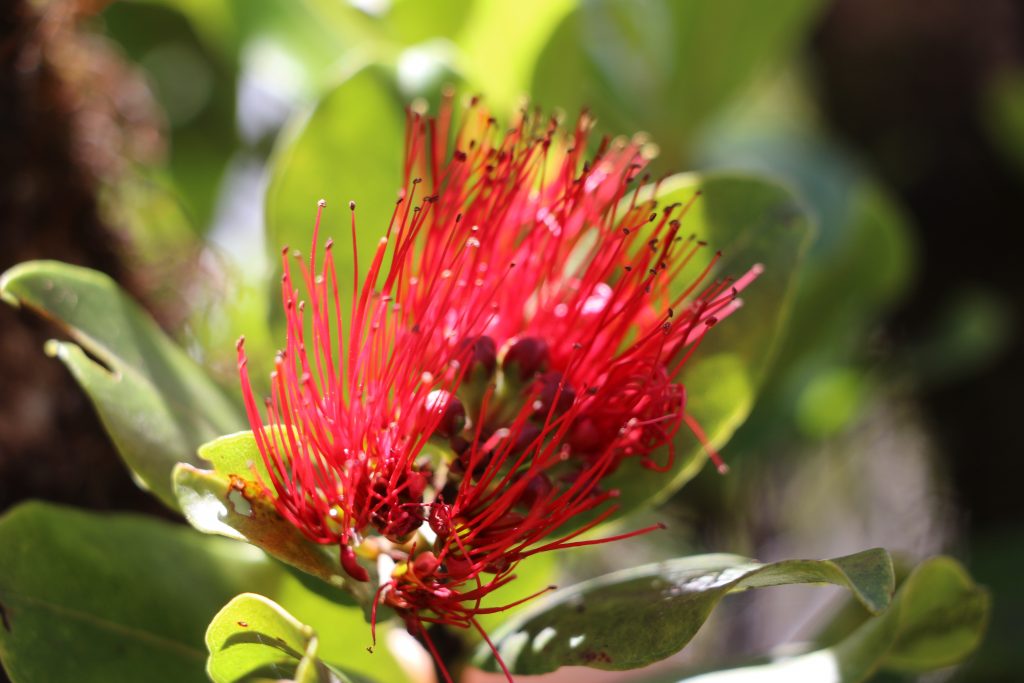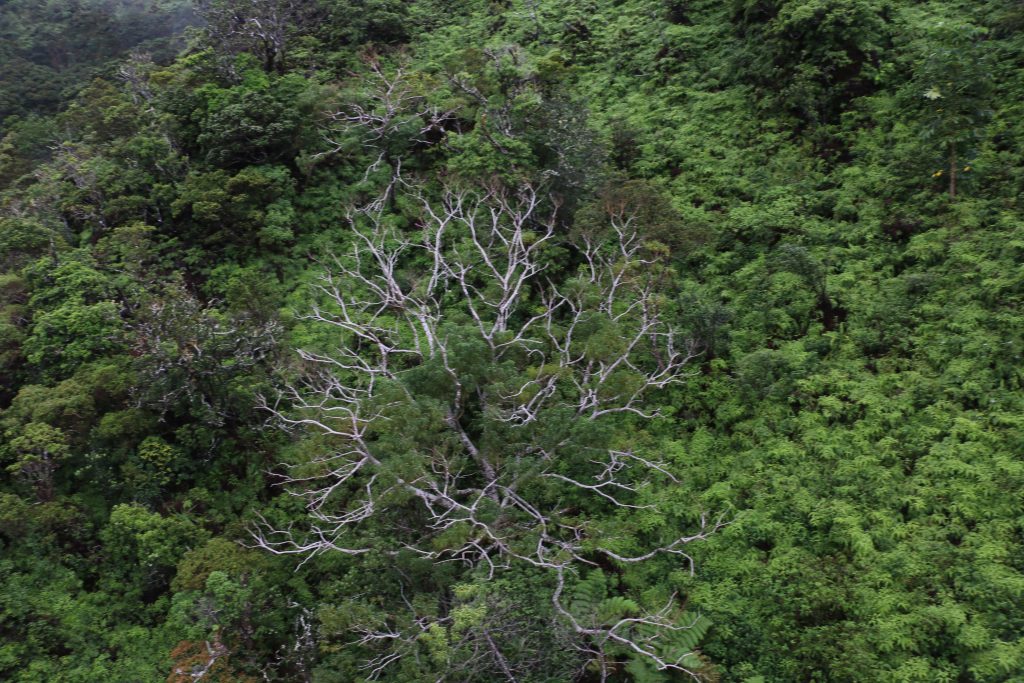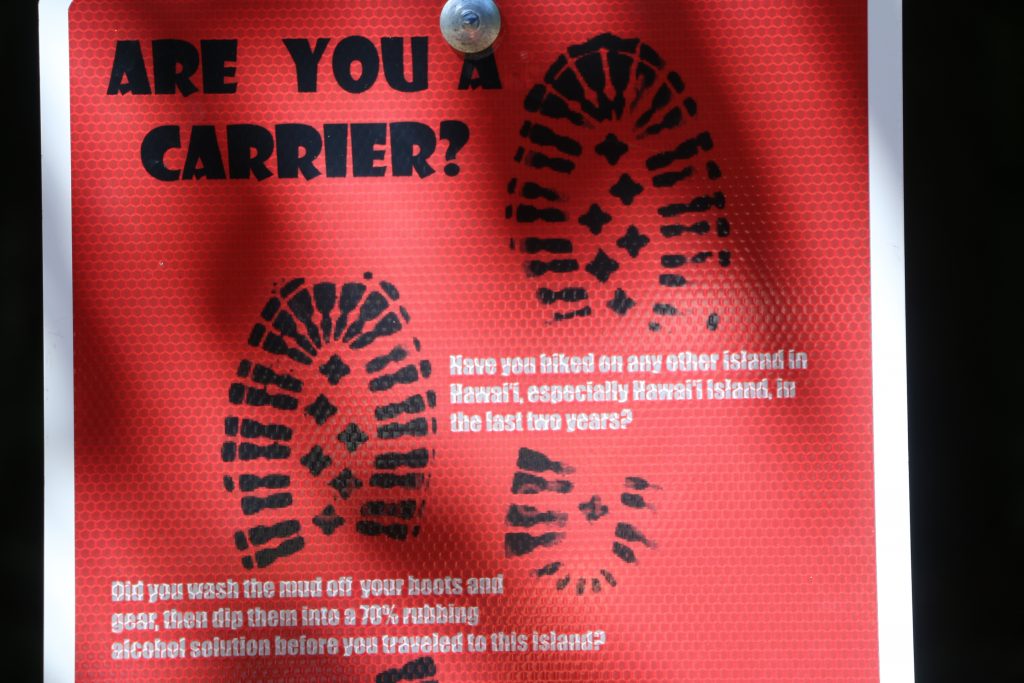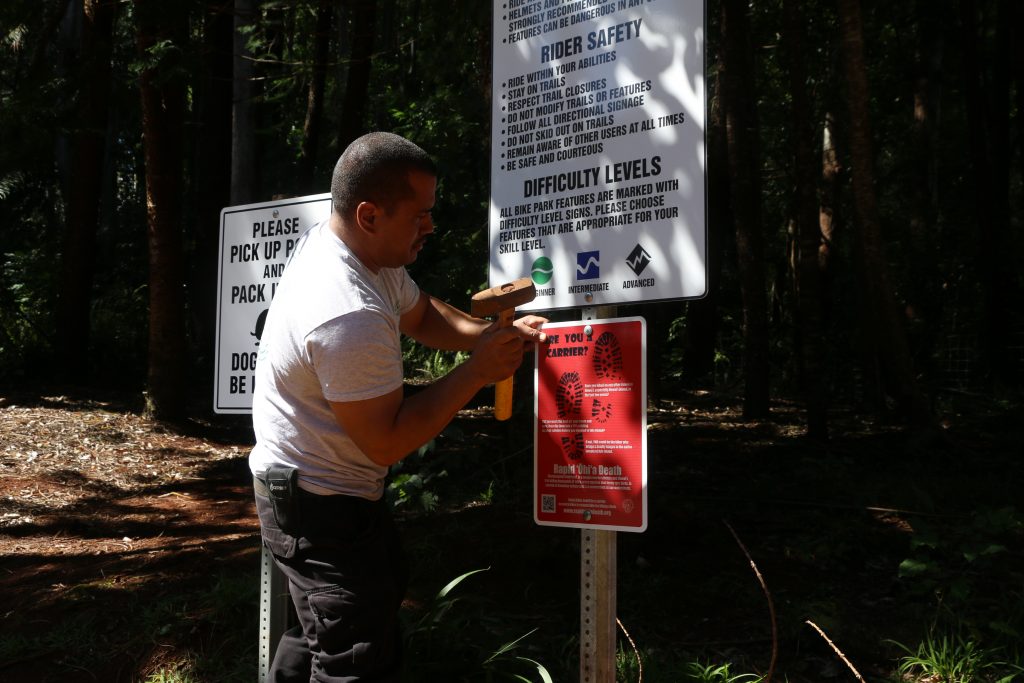BREAKING: Rapid ‘Ōhi‘a Death Confirmed in Single Tree on Maui
Ceratocystis huliohia, the less aggressive strain of the fungal disease called Rapid ʻŌhiʻa Death was recently detected in a single tree on private property in East Maui, according to new information released today by the Department of Land and Natural Resources.
The lone ʻōhiʻa tree stands 15-20 feet tall and is eight-to-ten inches in diameter. State officials say it is located a few feet from a taro loʻi.
Lance DeSilva, Maui Forest Management Supervisor with the DLNR Division of Forestry and Wildlife said, “This one tree is located away from other ʻōhiʻa trees, so this appears to be an isolated case. It will be treated immediately by torching or burning it.”
This is the first positive detection of the disease on Maui. Rapid ʻŌhiʻa Death has impacted vast acreages and thousands of trees on Hawai‘i Island. Both strains; the most aggressive, Ceratocystis lukuohia and the less aggressive, Ceratocystis huliohia have been detected there and on Kaua‘i. On Maui, only Ceratocystis huliohia has been detected.
Quarterly aerial surveys are conducted on Maui to spot trees that may be suspected of having the disease. Typically, samples are then taken from the ground and sent to a lab in Hilo for further testing to determine positive presence.
The next Maui quarterly survey is scheduled to begin on July 15.
DOFAW personnel on Maui are planning to reach out to residents of the Kīpahulu and Hāna areas to increase awareness in those communities for people to be on the lookout for other potential “backyard” ʻōhiʻa trees that should be monitored. Anyone who has a suspect tree is encouraged to call the DOFAW Maui office at (808) 984-8100.

‘Ōhi’a are the backbone of our native rainforest; they feed the honeycreepers, they protect the watershed. Photo credit: DLNR.

Rapid ʻŌhiʻa Death aerial survey/Big Island. File photo courtesy: DLNR

Individual signs are different in appearance, but contain the same basic message. Rapid ‘Ōhi‘a Death kills one of the most important native trees quickly and in wide swaths. Failing to follow the simple recommendations outlined on both signs could make you responsible for spreading this disease inter-island and intra-island. Photo credit: DLNR.

Individual signs are different in appearance, but contain the same basic message. Rapid ‘Ōhi‘a Death kills one of the most important native trees quickly and in wide swaths. Failing to follow the simple recommendations outlined on both signs could make you responsible for spreading this disease inter-island and intra-island. Photo credit: DLNR.












